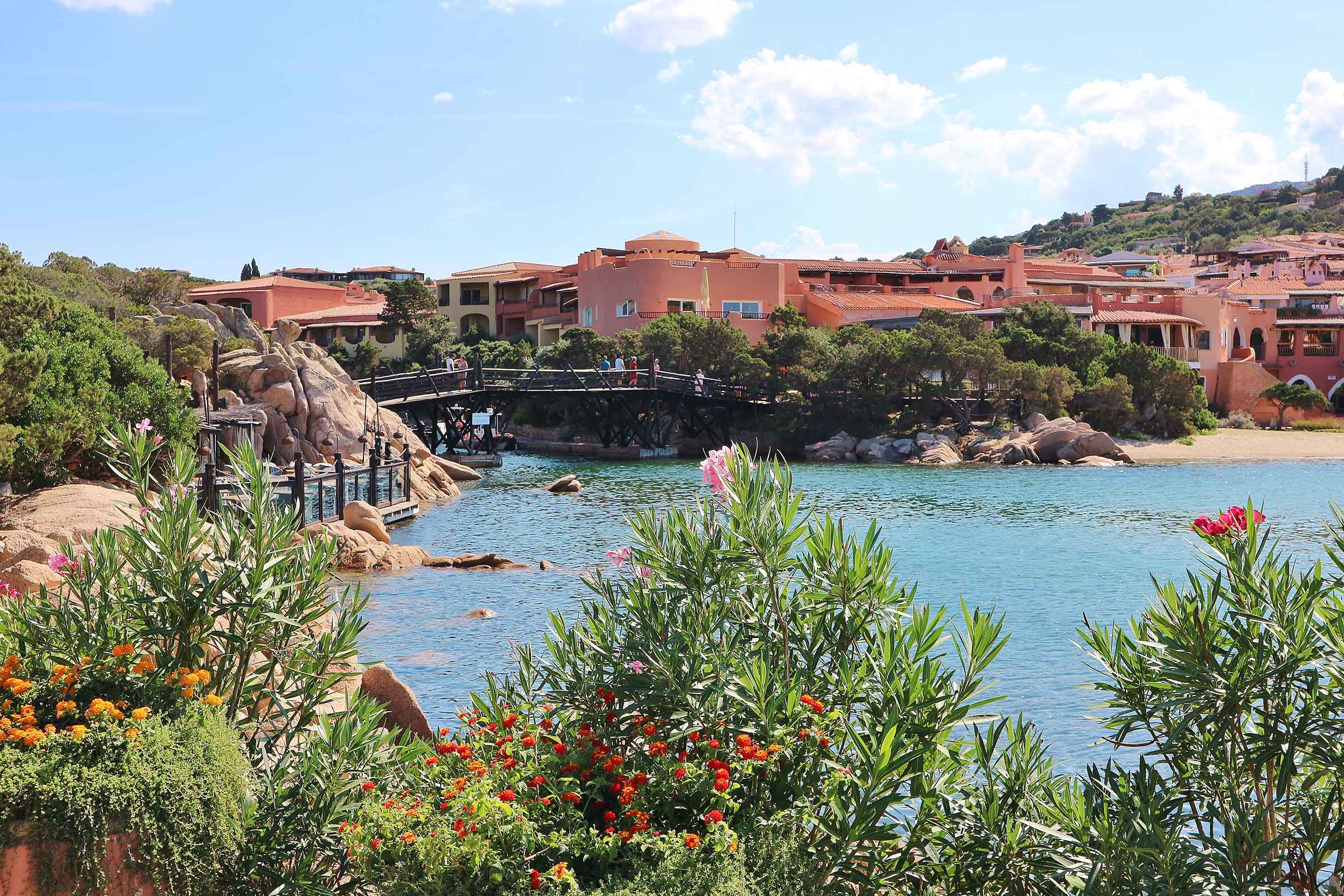Porto Cervo
Porto Cervo is the main town of the Costa Smeralda. Built around the deep natural harbor, whose form recalls that of a deer, was born in the Sixties at the hands of the Ishmaelites Prince Karim Aga Khan, who has turned this lonely stretch of coast, inhabited only by farmers and breeders, in a statement resort offering accommodations, local fashion, beautiful beaches and clear blue sea.
Porto Cervo, many called the invisible city, boasts a beautiful old town, developed around the Old Port, which dates back to the'60s: the narrow streets, houses built in the typical style of the Costa Smeralda, which the style of old houses Gallura with multicolored windows and balconies, the walk, the small Chiacchiere the Piazzetta, the heart of the city and the theater of everyday life, surrounded by shops, from gold, and the shops of the finest works of art, Sottopiazza. The periphery of the local houses the trendiest nightclubs and restaurants most prestigious, the true center of life Night of the coast.
In addition to Porto Vecchio, Porto Cervo is equipped with a modern Harbor, one of the best equipped in the Mediterranean, suitable to host up to 700 boats, of any type or size. Walking along the banks of the two ports can be admired, especially during the summer, the most beautiful boats, yachts and yachts owned by celebrities. The port is located the famous Yacht Club Costa Emerald, which organizes some of the most important and exciting races, sporting events and parties.
Porto Cervo offers accommodation of choice: luxury hotels, such as' Hotel Porto Cervo, Hotel Pitrizza and the Hotel Cala di Volpe, restaurants offering local dishes revisited by great chefs, fashionable places frequented by celebrities, exclusive beaches, but not shortage of rural houses, camping and bed & breakfast for the less wealthy tourists who do not want to give up his vacation in Porto Cervo.
Strolling along the docks of the marina, with an eye to the windows and the other yachts moored in, you reach the Stella Maris church, built in the 60s by 'architect Michele Busiri Vici following the rules of Mediterranean architecture. The front has a front porch supported by six monoliths, the bell has a cone shape with a very large, while the tip is a cross of iron. Placed on the facade are two sculptures of Pinuccio Scioli depicting St. Joseph and Pope John Paul II. Inside there is a striking painting by El Greek (Domenico Theotocopulos), the Mater Dolorosa'500, the precious organ pipe Neapolitan of De Martino ('600 /'700), the bronze doors depicting the Annunciation and the Christian symbols of Luciano Minguzzi (1986), and two crucifixes eighteenth German school (one of the eighteenth century and the end of a century).
